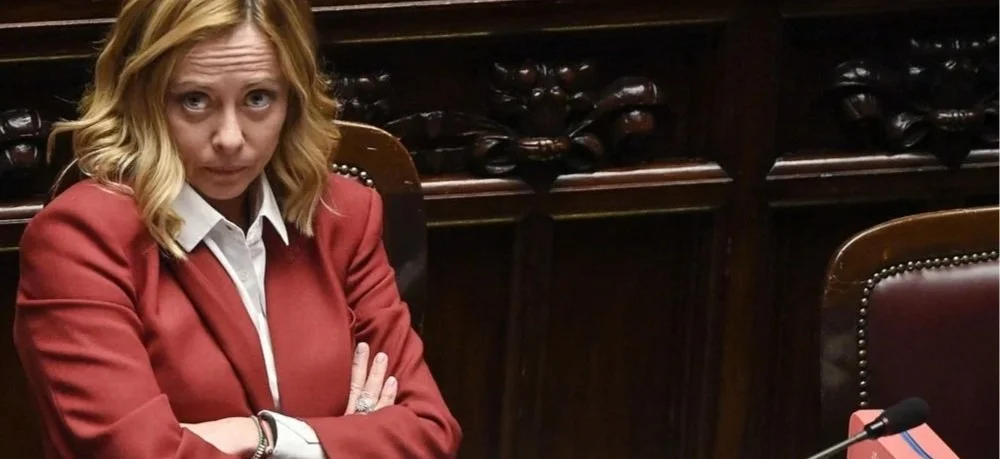The Pact on Migration and Asylum: a sad disguise
By Maria Rogano
A new attempt to manage border control
After reading the new Multiannual Financial Framework (MFF) proposed by the European Commission, something that catches the eye is the €34 billion allocated to migration management and the strengthening of external borders.
This move fits into the context of the Pact for Migration and Asylum, which the Council adopted on 14 May 2024 and is expected to enter into force next year. It consists of a series of new rules aimed at managing migration and establishing a new and more efficient common asylum system. Some important goals of this policy are:
To secure external borders
Fast and efficient procedure
An effective system of solidarity, characterised by a higher level of coordination, intended to make the management of migration more efficient
However, many doubts have arisen about the detrimental effect on the protection of fundamental rights, in particular the risk of prolonged detention, weakened protection for asylum seekers, and insufficient procedural guarantees.
What about asylum seekers?
On 23 July, the European Agency for Fundamental Rights (FRA) published a document responding to these new rules. It invites not to punish migrants and refugees who are ‘exploited and mistreated for political purposes’ and to address the problem at its roots (which the FRA addressed as ‘hostile actors’).
As the FRA points out in the document, according to the EU Charter of Fundamental Rights, any limitation on fundamental rights such as the right to asylum, can be imposed in exceptional circumstances. The new migration Pact allows for rejections and limitations of rights for migrants if a third country is considered to facilitate the movement of people towards EU borders with the aim of weakening and sabotaging the Union or one of its Member States.
While the EU must address and avoid the instrumentalisation of migrants, this should not be the only response. According to the FRA, the EU can address this phenomenon without infringing on the rights of people. A legitimate method could be sanctions against these countries. For example, since 2012, the EU has used them to contrast the weaponisation of migrants from Belarus.
The pact allows for the possibility of a 12-week-long accelerated procedure that ‘requires asylum applicants to reside at or in proximity of the external border or in a transit zone’, which can lead to the overcrowding of borders. Fast-track procedures have been criticised because they do not guarantee an adequate level of safeguards. NGOs, including Amnesty International, warn that this could be used indiscriminately, and applications from these migrants will be rejected without a proper evaluation. This accelerated procedure would have a greater impact on fundamental rights than it should.
The FRA and NGOs are not the only entities that remain unconvinced. Poland, Hungary and the Netherlands objected to it with the intention to ask for an opt-out. If granted, Member States will be able to apply an even stricter asylum policy.
The cost of rejection
The consequences of the rejection of asylum seekers will be expensive but not effective: the Member State should pay around €20,000 per rejected person to the country that decides to welcome them, but this is non-binding.
According to the Pact, Member States must also give financial support to the countries facing the most migration pressure. However, not only does the economic structure to support this seem unlikely, but also, there is no specific use to which these funds are bound.
This is dangerous ground. A similar funding framework for border management ended up with Italy using funds to build detention centres for migrants in Albania.
Apart from the economic perspective, certain politicians, like Donald Tusk, think that the plan will also impair sovereignty and national interest, and argue that the model is unsustainable for their social, health and welfare services.
Crossing the border… legally
The Pact provides for a meticulous process of screening arrivals, which seems inefficient and cheap. All the personal and biological data will be stored in Eurodac, the European asylum fingerprint database. The procedure of entry into the border of a Member State is lengthy enough already. In Italy, the sole identification can take up to eight days. While this is taking place, the screened person is still considered legally outside EU borders (according to Article 6 of the Screening Regulation). This will create a gap in the accountability of Member States, as the grounds for states’ responsibility towards migrants are diminished, leading to situations where it is much easier to violate the fundamental rights of asylum seekers.
Not an asylum seeker if we just change the definition
Another trick that the Pact has pulled is the labelling of countries as ‘safe’. Now, many third countries from which migrants are coming will be labelled as ‘safe countries’. This means that any asylum seekers coming from these countries will be automatically rejected; since their countries are ‘safe’, they technically do not need any sort of protection... under the pact’s criteria at least. This will likely result in the rejection en bloc of applicants from these countries, with no review of their situation whatsoever.
Sorry, not eligible
The Pact also aims to facilitate the repatriation or return to countries of transit through the stipulation of new agreements. This is already taking place between the EU and Tunisia, which has allowed the return of its nationals in exchange for economic aid.
The EPP was initially dissatisfied with the Pact’s lack of a coordinated return policy for the management of returns of non-eligible individuals. For this reason, in March 2025, the political group presented a legislative proposal for a revision of the 2008 Return Directive, which was deemed ineffective because only one quarter of undocumented migrants leave the EU.
According to Lena Düpont MEP, a new amendment will allow for ‘faster, harmonised implementation and mutual recognition of return decisions across EU countries.’
However, today, even legal movements of asylum seekers within the European Union are highly ineffective. It is unlikely that this new EU policy for the return of migrants to third countries will work better.
This is only a brief overview of the new asylum and migration policy that the EU is carrying out; it does not claim to be complete. This article focuses on the‘arrival’ part and does not take into consideration the lacking policies which aim at the integration of migrants. It intends to spread awareness and offer an idea of how poorly its core elements are addressed. The system is uncoordinated, highly expensive and inefficient at the expense of people who have nothing. There is no ‘black-or-white’ answer to the problem, but this one is certainly wrong.



